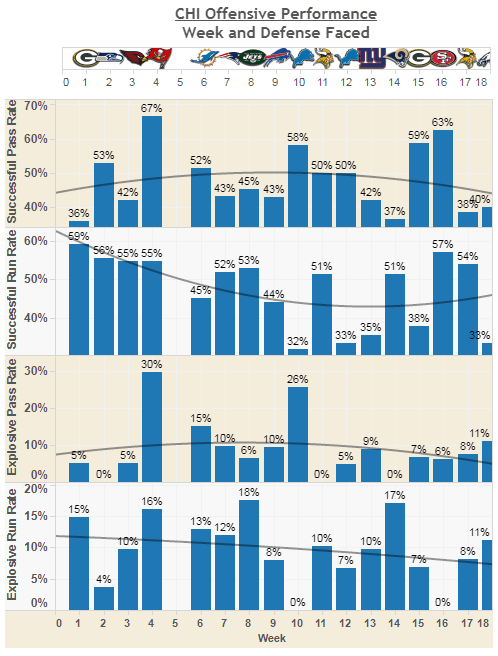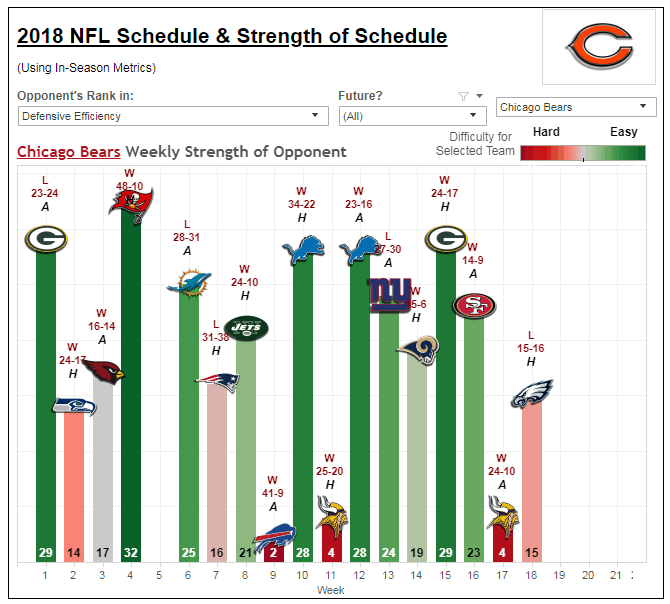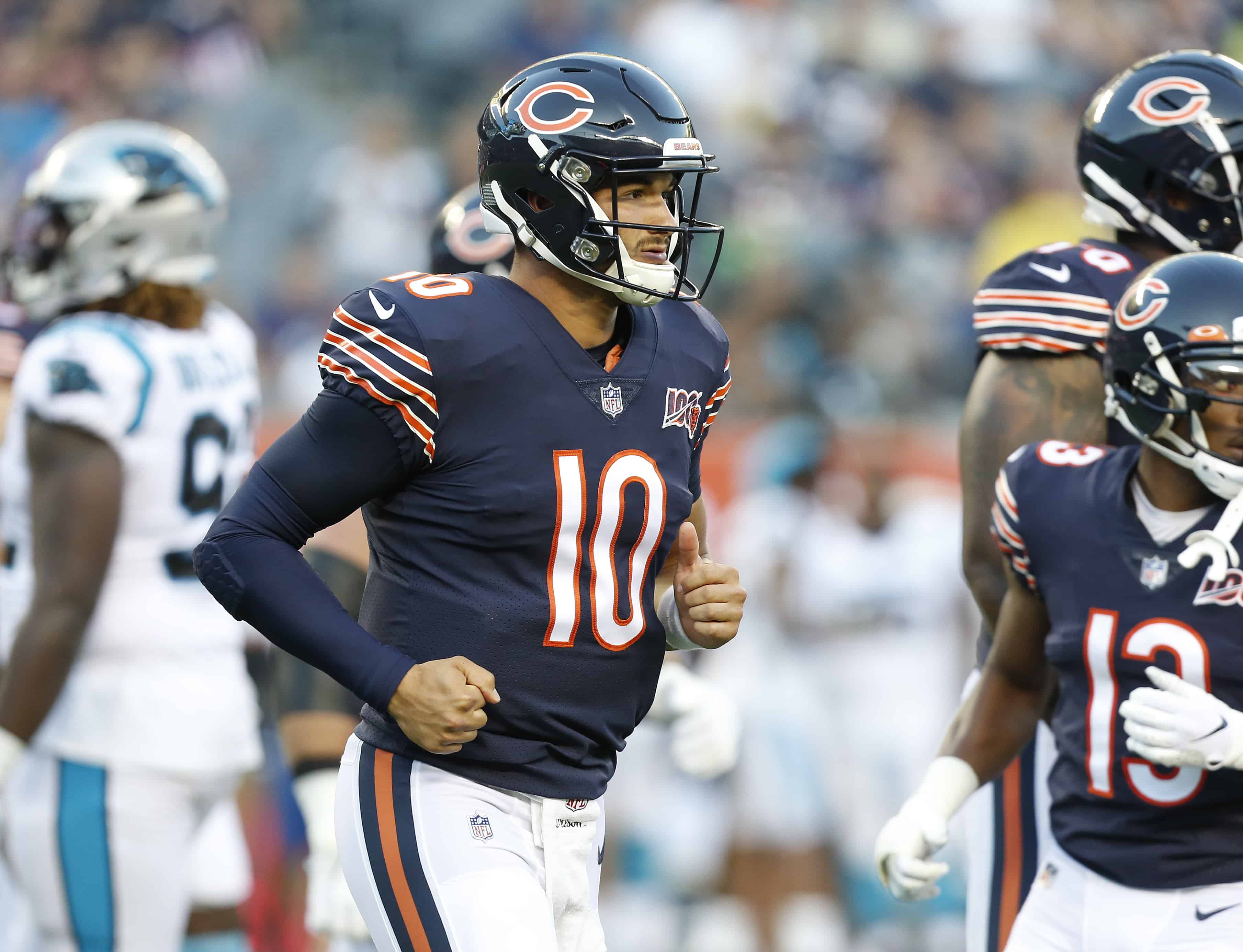Not all is well in the Windy City as it relates to the development of Chicago Bears quarterback Mitchell Trubisky.
On Monday, it was reported the Bears are having to scale back their offensive install due to issues with Trubisky’s ability to pick up things, as he enters Year 3 as an NFL QB.
As a result, head coach Matt Nagy is being forced to “stick with plays that are familiar” and within the offense’s core concepts. He’s trying to do so to get the team back to playing fast and playing “with confidence.”
In the NFL, these are very concerning statements. This is because defensive coordinators study their opponent’s offense the prior year all offseason. Defensive coordinators are able to jump on quarterbacks and coaches who are not creative enough over the offseason.
It already started happening to the 2018 Bears last year during the season.
The 2018 Bears offense was a big reason for their success early in the season. But as the below trendlines show, the offense tailed off considerably later in the season.
The passing offense, which produced a 52% success rate or better in three of its first five games, produced a 52% success rate just three times over its final 12 games.
The rushing offense, which produced a 52% success rate or better in six of its first seven games, produced a 52% success rate in just two of its next 10 games. It recorded a sub-45% success rate six of those 10 games, something it didn’t do in any of its first seven games.
The explosiveness of the offense also took considerable steps back over the second half of the season, both in the air and on the ground.

This should concern because over the Bears’ final half of the season; they played one of the easier schedules of opposing defenses. In their final nine games, the Bears played just one team that ranked above 15th in defensive efficiency (the Vikings) and played five of nine games against defenses that ranked bottom-10 in the NFL.

The ability of opposing defenses to limit the Bears offense down the stretch was very evident looking at performance in division games, where Chicago played the same opponent twice. These defenses were measurably better in the repeat performance:
Bears offensive production on early downs in quarters 1 thru 3:
First 2018 meeting vs division opponents:
- Success Rate: 55%
- Yds/Play: 6.5
- Explosive Play Rate: 13%
Repeat 2018 meeting vs division opponents:
- Success Rate: 51%
- Yds/Play: 6.0
- Explosive Play Rate: 5%
Clearly, Chicago was not doing enough offensively throughout the season to prevent opposing defenses from using film study to understand their objectives.
The hope was the offense would add much more this offseason, to regain the upper hand.
But that appears as though it’s not going as planned. If Nagy truly will need to stick with “familiar” plays and concepts, and “scale back the offense” as is being reported, it’s a major red flag, considering what happened to this offense down the stretch last year.
Last year, when the Bears defense held its opponents to 14 or fewer points, Chicago went 7-0. When the defense allowed over 14 points, Chicago went 5-5. The 14-point inflection is extremely low. The average team scored over 23 points per game last year, more than a full touchdown higher than what the Bears needed their defense to do in order to ensure victory rather than a coinflip result.
The entire report wasn’t all negative. It shared that Trubisky has made great strides in his leadership, work ethic, and attention to detail. In addition, the quarterback has been able to make progress “in operating the huddle, making pre-snap reads, properly setting protections, correctly diagnosing defenses, and sharpening his touchdown-to-checkdown mentality.”
With a couple more weeks of camp remaining, let’s hope Trubisky is able to make great strides and does not limit Nagy’s desire to grow and expand the offensive plans he had in store for the 2019 season.
















